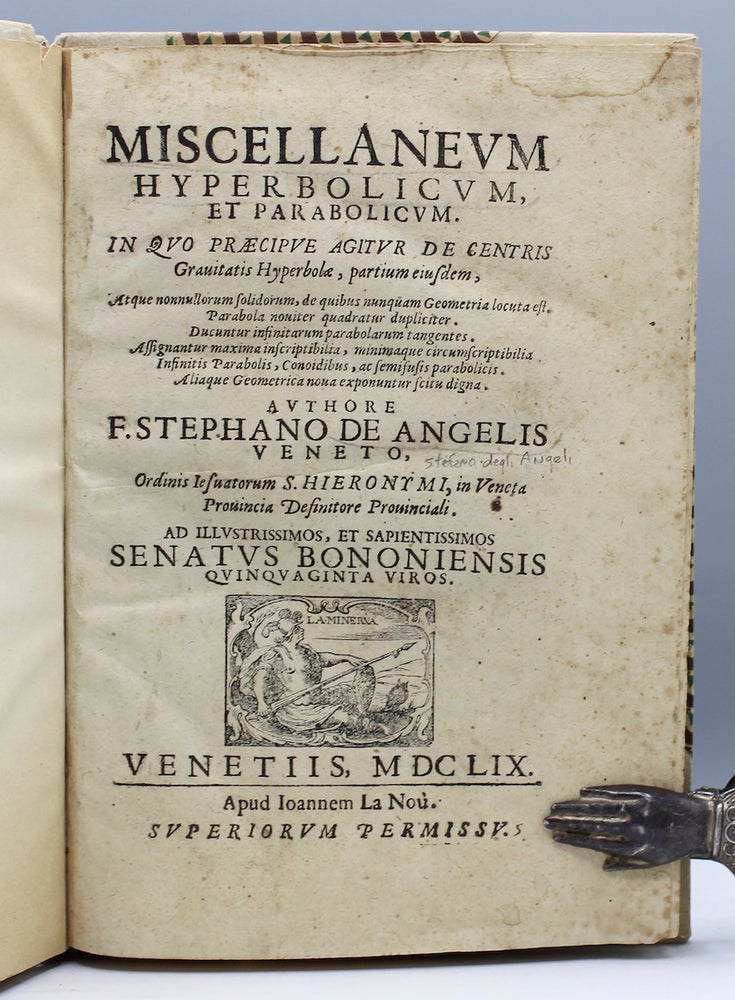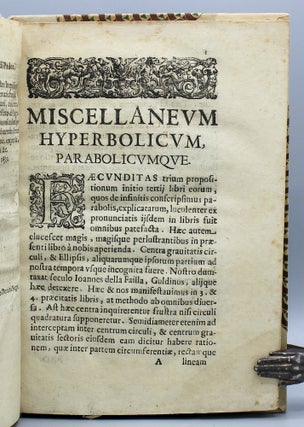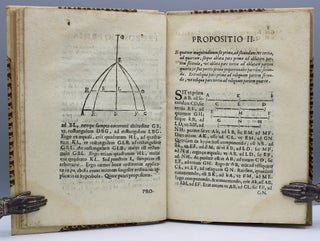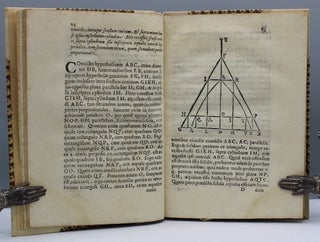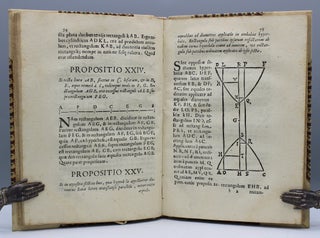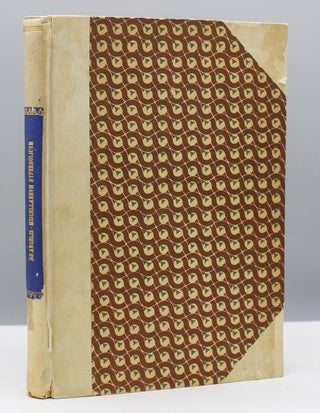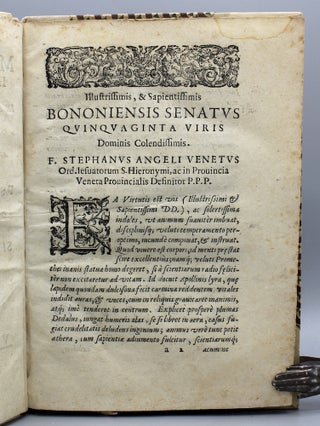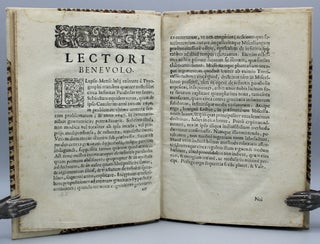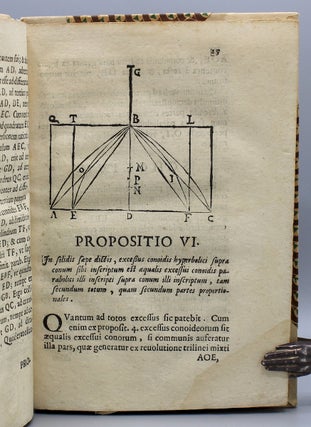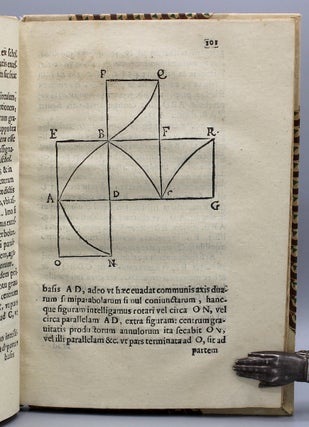Miscellaneum Hyperbolicum, et Parabolicum: In quo praecipue Agitur de Centris Graitatis Hyperbolae, Partium Eiusdam
Venice: Joannem La Nou, 1659. First edition of a scarce mathematical text. OCLC notes copies at Columbia, Harvard, New York Public Library, Linda Hall Library, Michigan, Wisconsin, Göttingen, Oxford, Edinburgh, and Marburg. This book has not appeared at auction in at least the last thirty years, according to American Book Prices Current. Numerous woodcut diagrams in text. Title-page lightly foxed, light dampstain at lower corner through part of the text. Bottom corner of V1 torn away and reinforced with new paper. Book location label on front pastedown. A very good copy. Late nineteenth century vellum over decorative boards, gilt cloth spine label. Small quarto. . [8], 215, [1] pp. Item #14538
Stefano degli Angeli (1623-1697) entered the Order of the Gesuati of Saint Jerolamen. At twenty-one, he became a reader of literature, philosophy, and theology in the faculty of his order at Ferrara, but left three years later for health reasons and went to Bologna. At the University of Bologna, under the guidance of Bonaventura Cavalieri (1598-1647), he developed a strong interest in mathematics. Cavalieri was so appreciative of his abilities that he entrusted Angeli with the task of correcting and publishing his last work, Exercitationes geometricae sex (1647). Angeli was offered the opportunity to succeed Cavalieri as professor of mathematics, but turned it down. After various appointments, he became in 1663 professor of mathematics at the University of Padua, a post that had been held by Galileo, and he remained there until his death. Riccati was one of his pupils. Angeli's mathematical works were on infinitesimals, which he used to study spirals, parabolas and hyperbolas. While in Venice, he published the present work, as well as De infinitorum parabolis (1654), De infinitorum spiralium spatiorum mensura (1660) which contains a generalization of Archimedes' spiral, and De infinitorum cochlearum mensuris ac centris gravitatis (1661) which carries out Torricelli's intention of finding the centre of gravity of a solid body called a cochlea. At Padua, he examined fluid statics based on Archimedes' principle and Torricelli's experiments. He published Della gravita dell aria e fluidi in 1671.
Riccardi, column 34, no. 3 (“raro). See DSB, and the website of the School of Mathematics and Statistics at the University of Saint Andrews.
Price: $3,500.00



